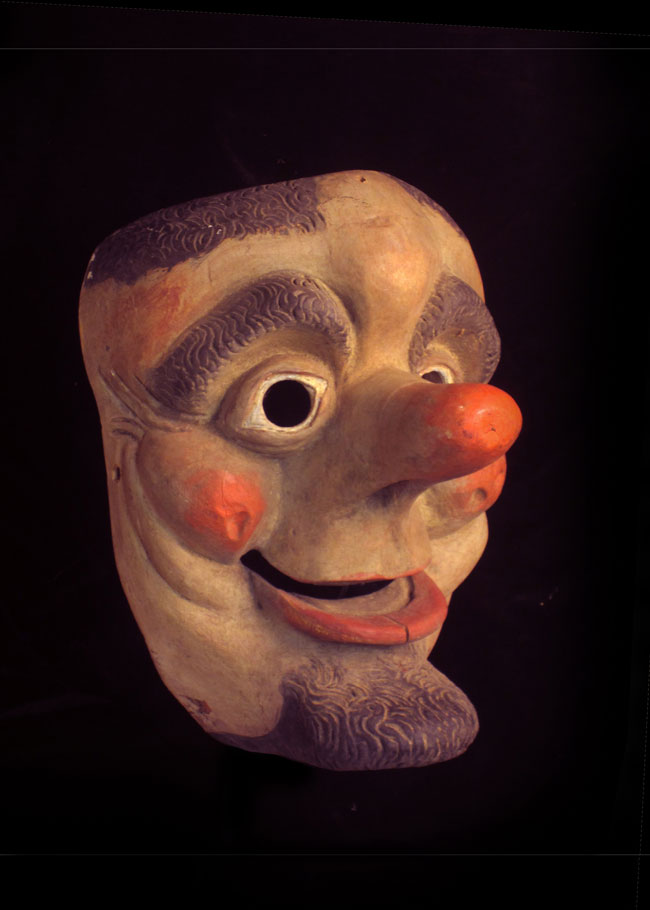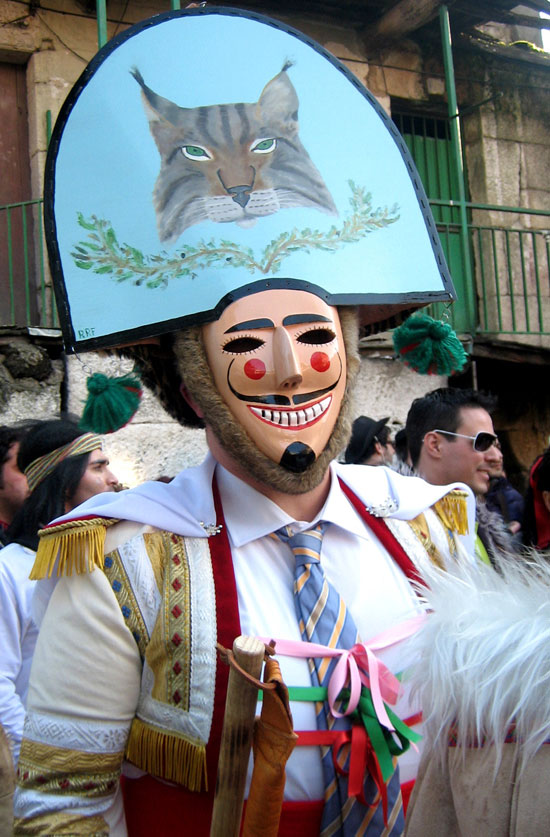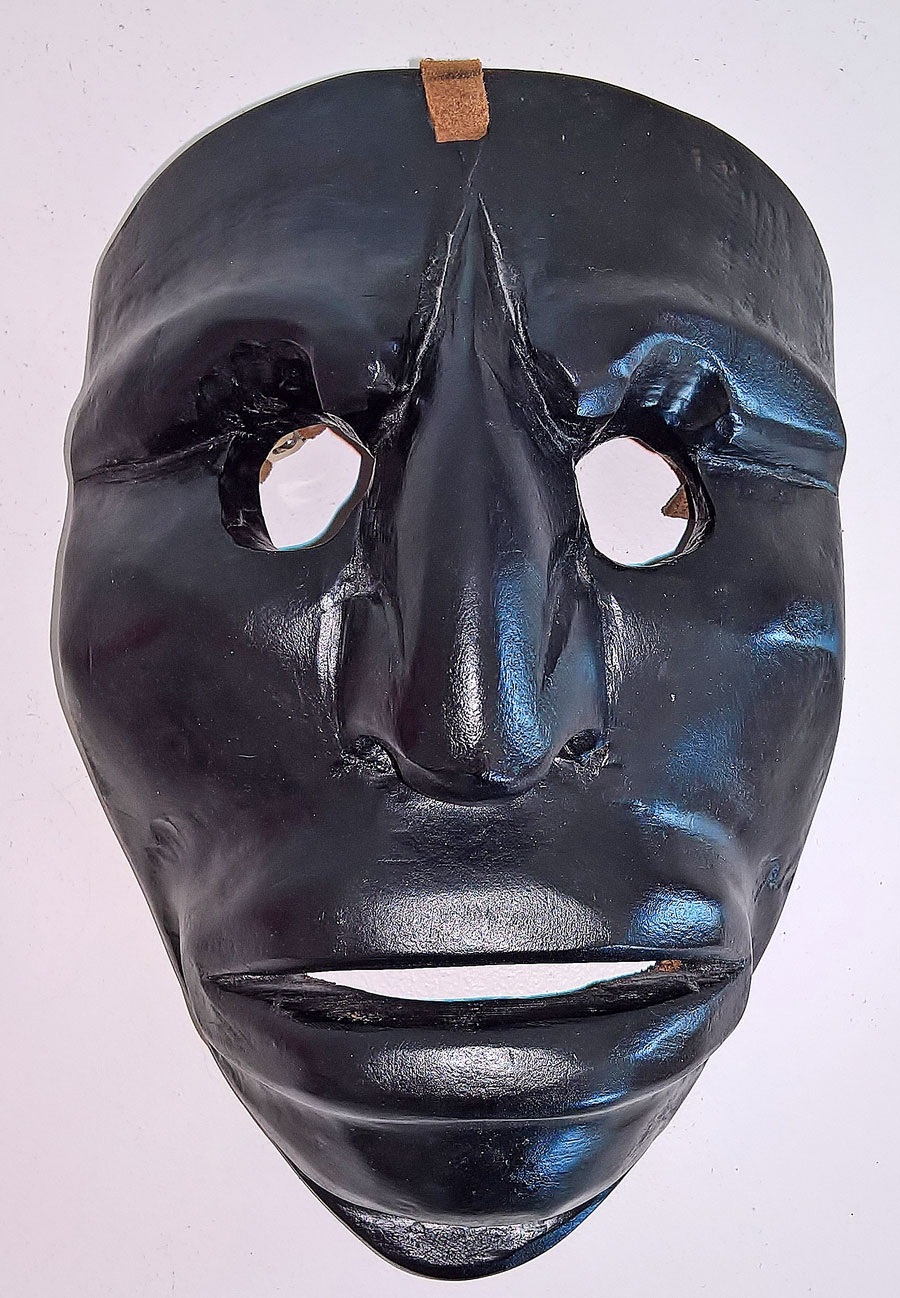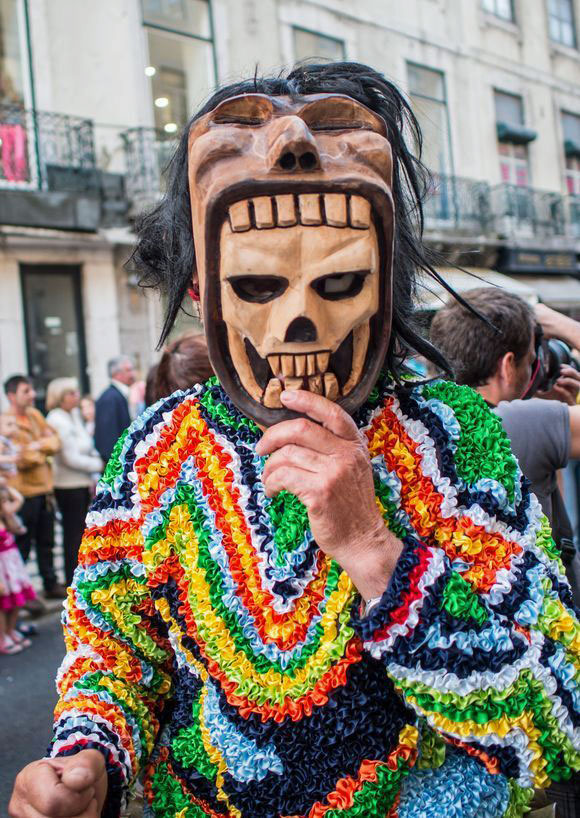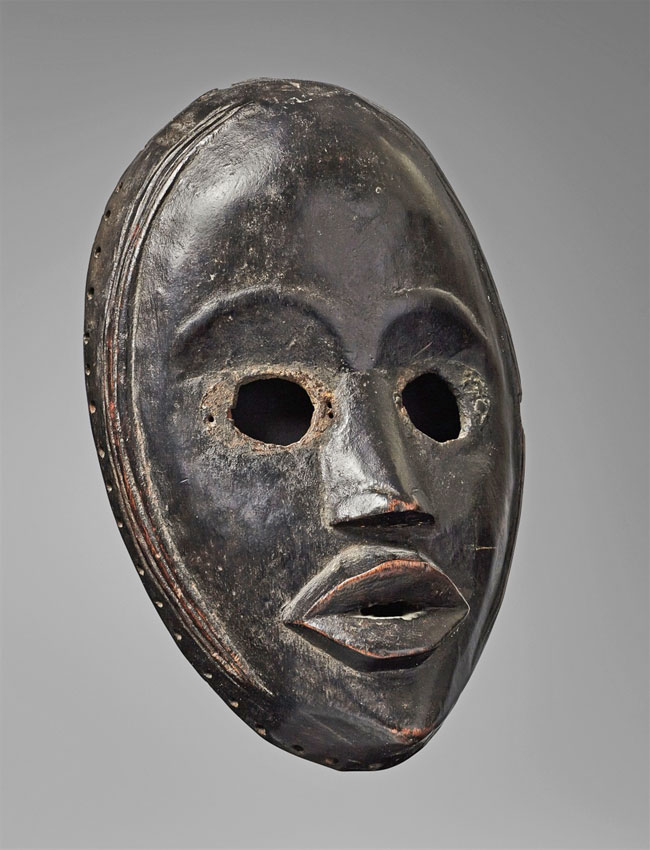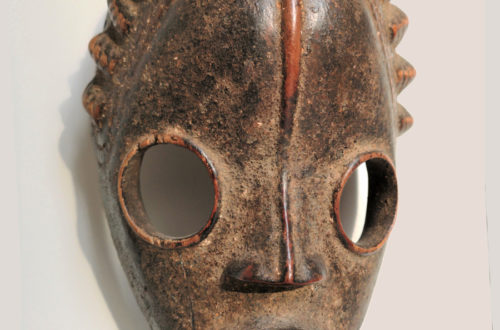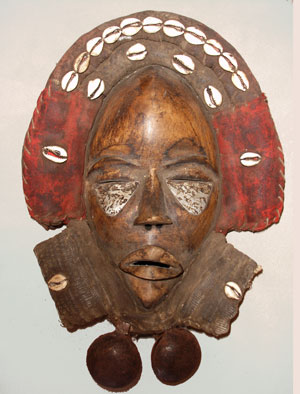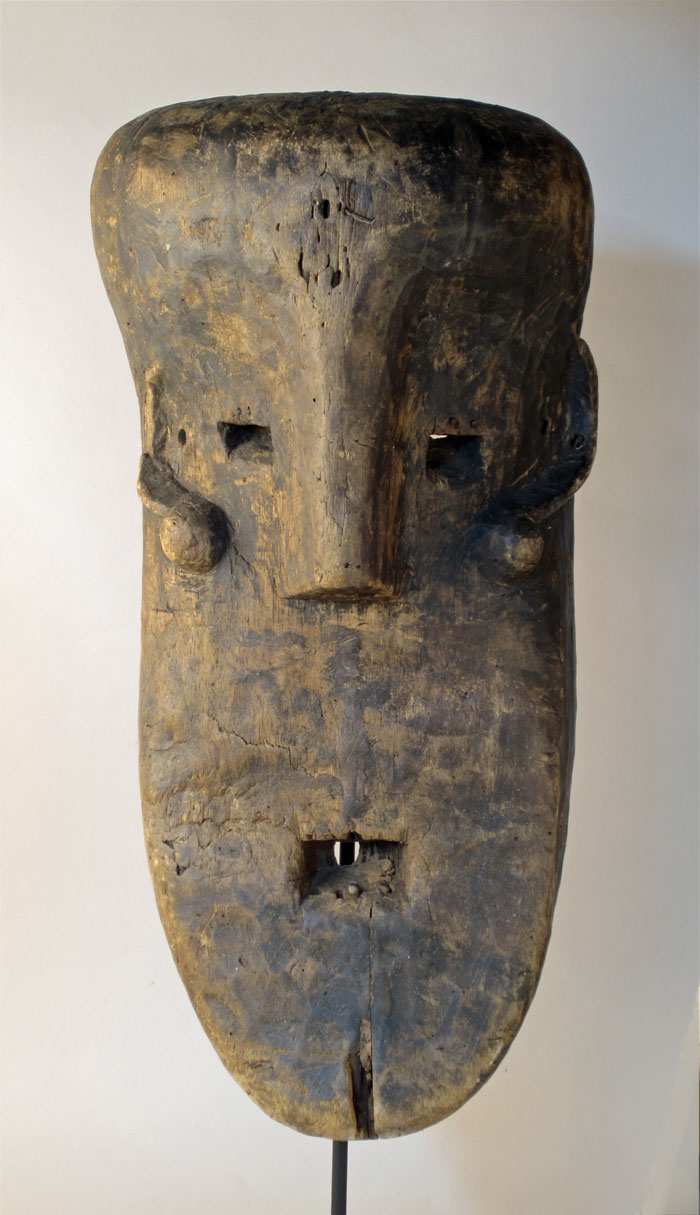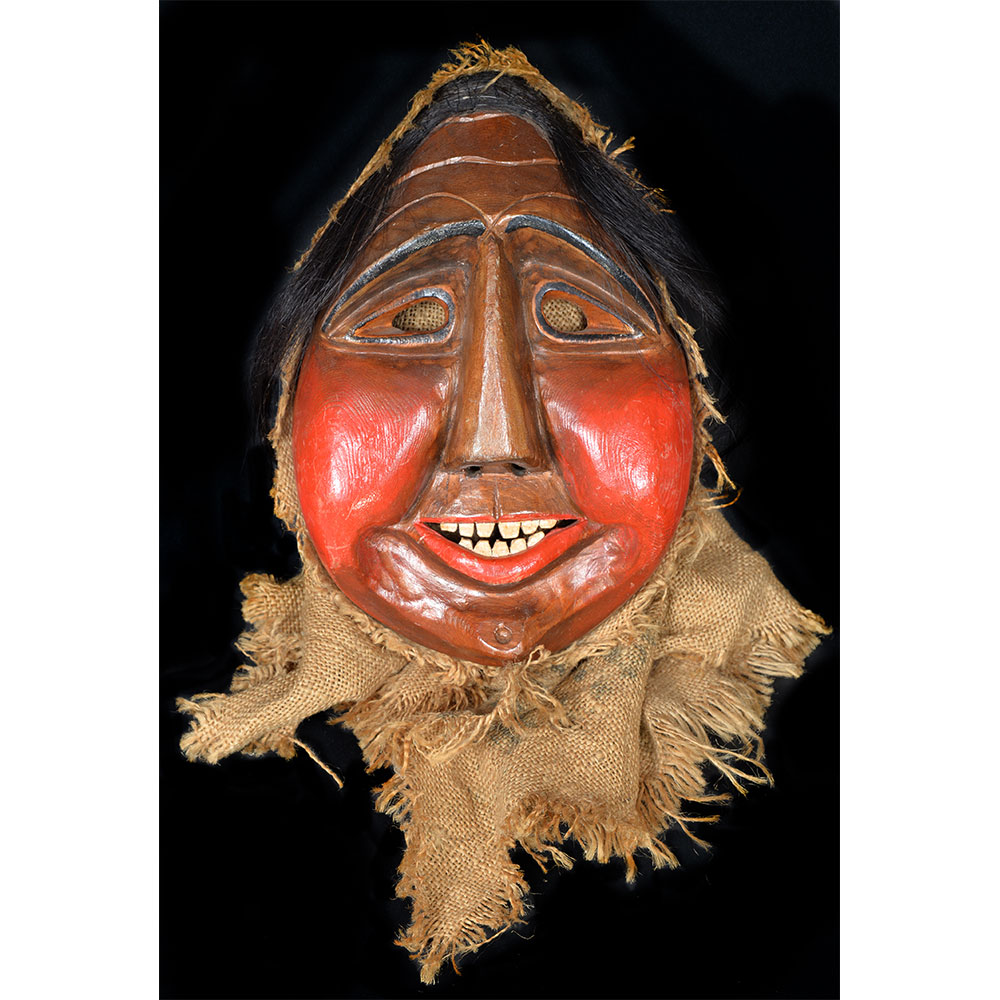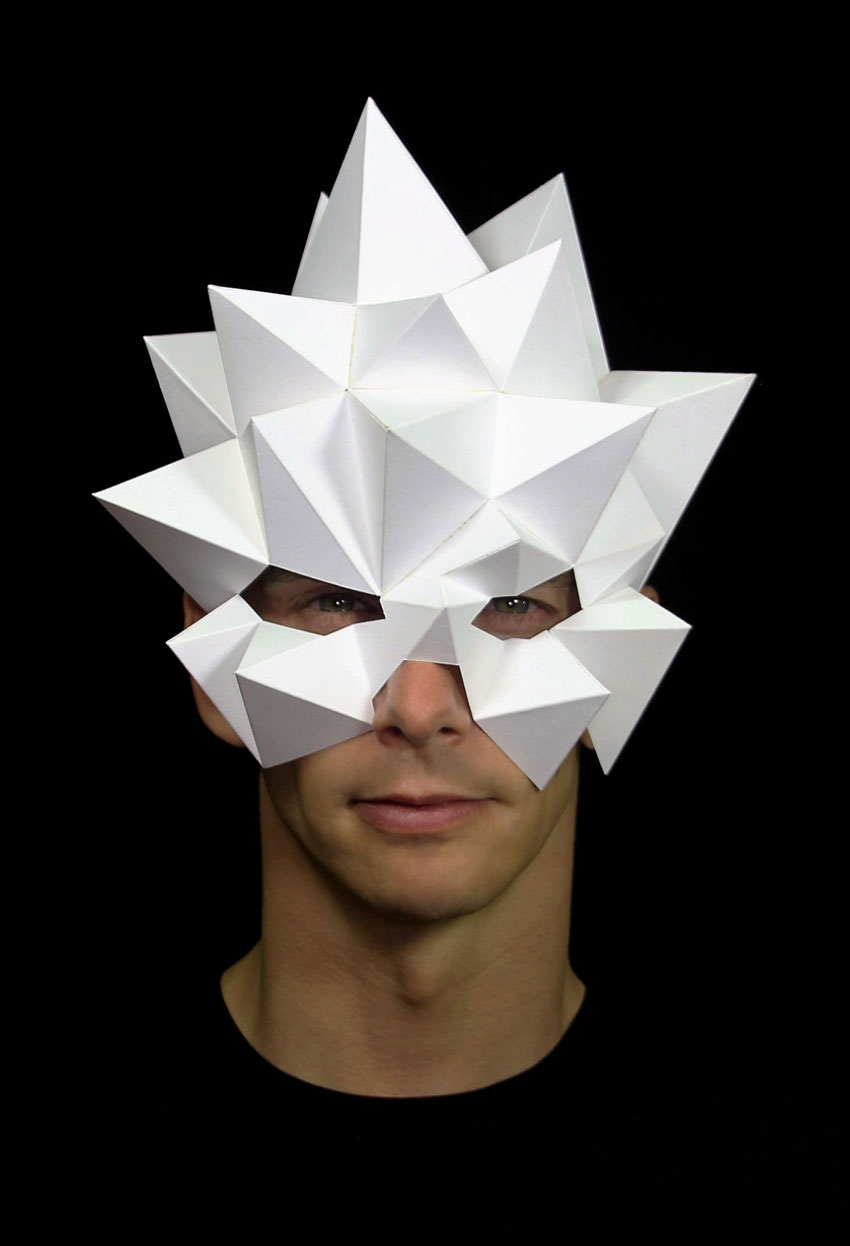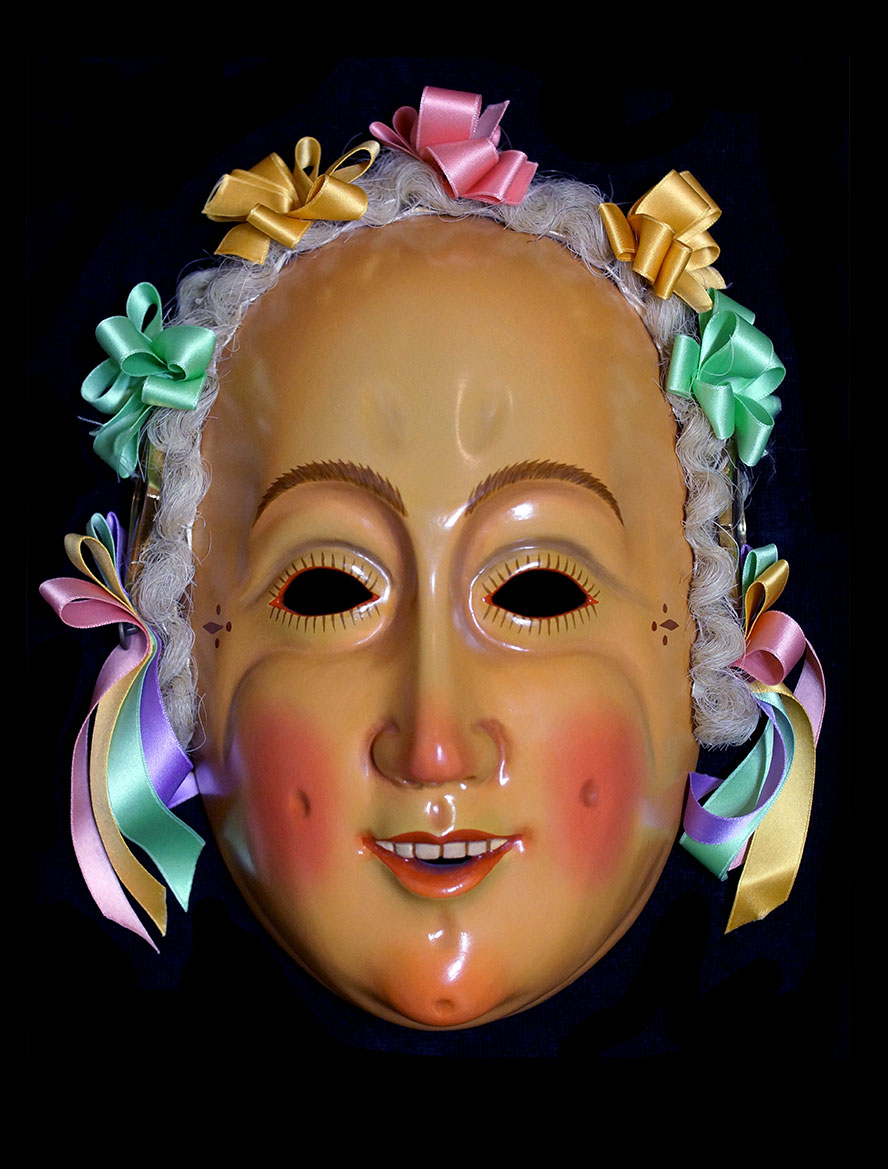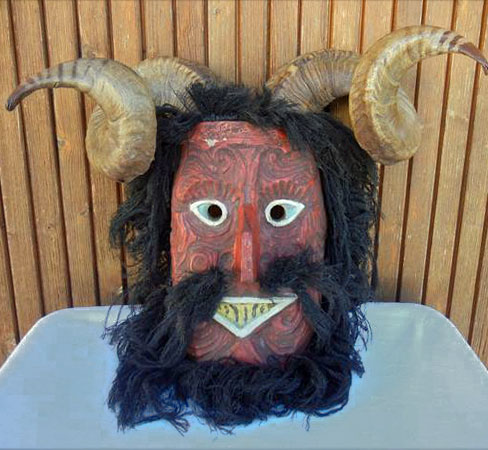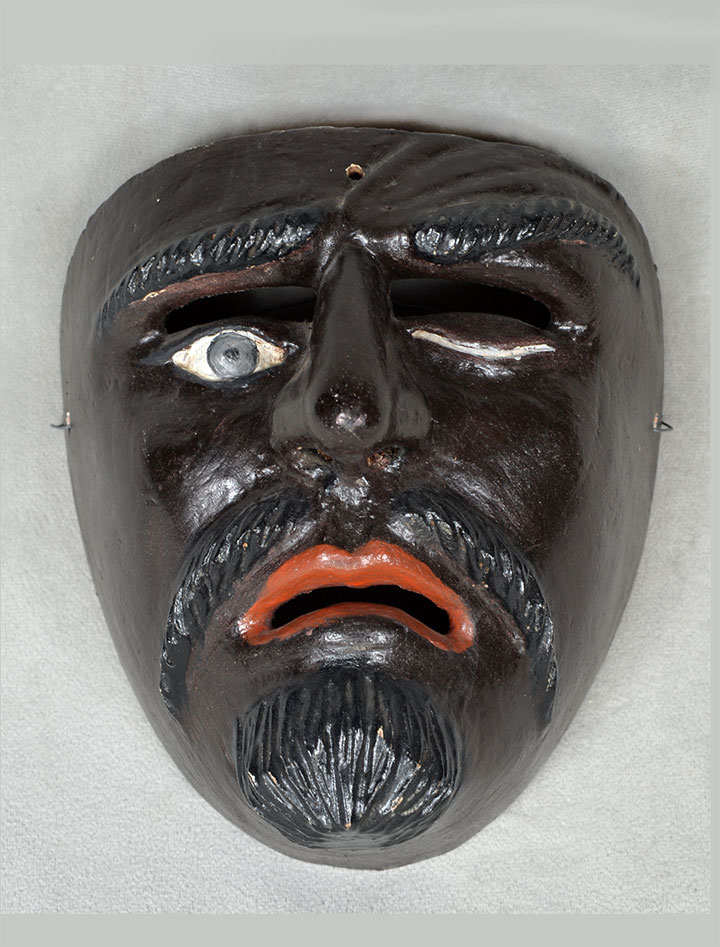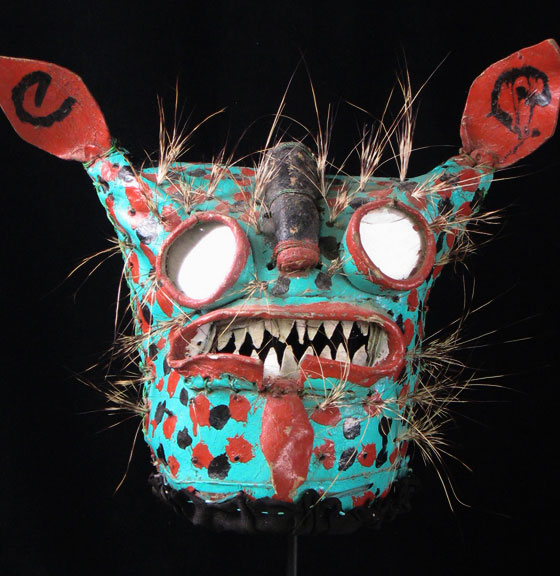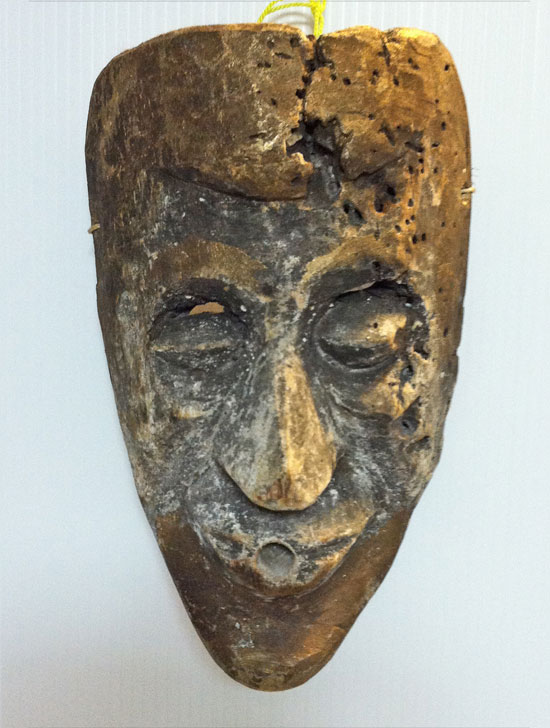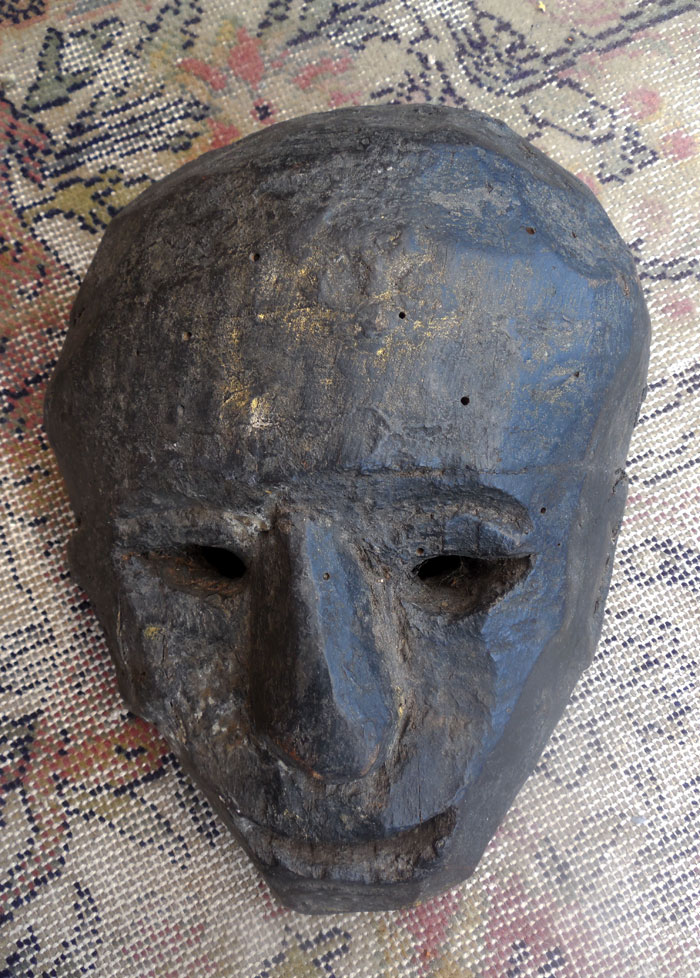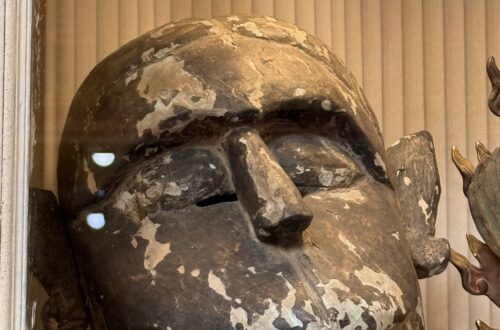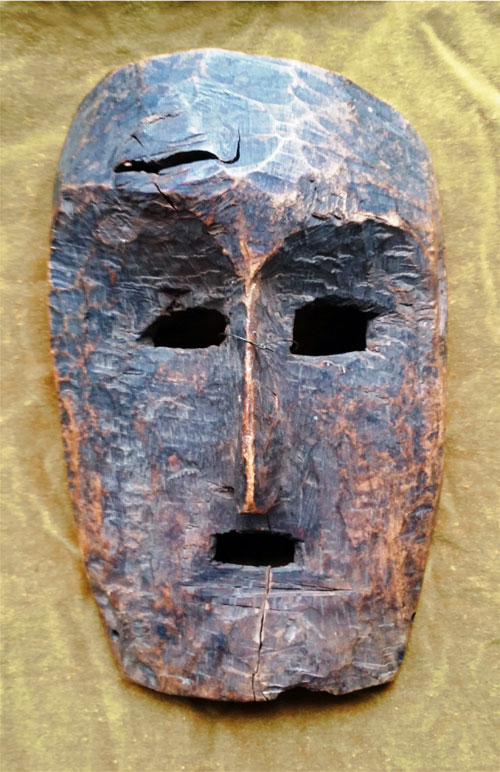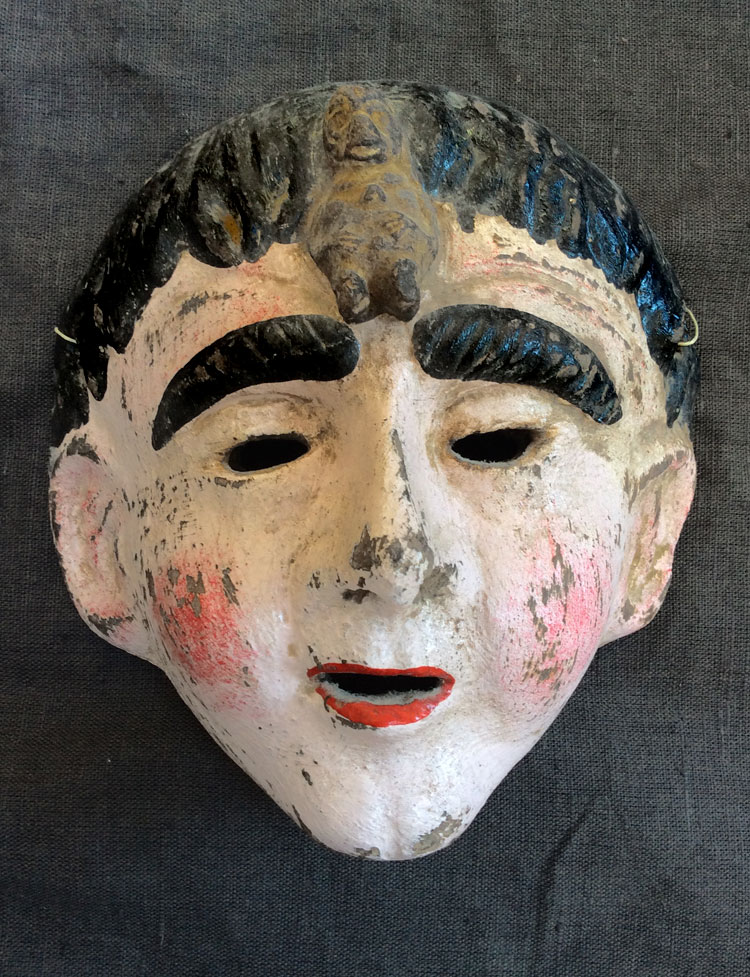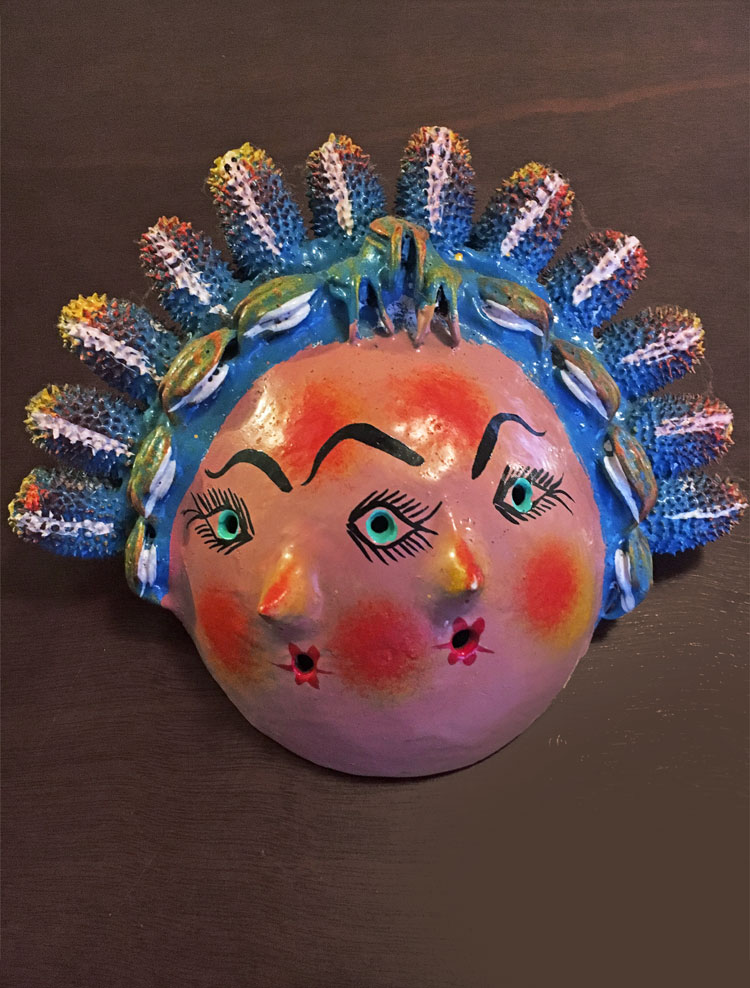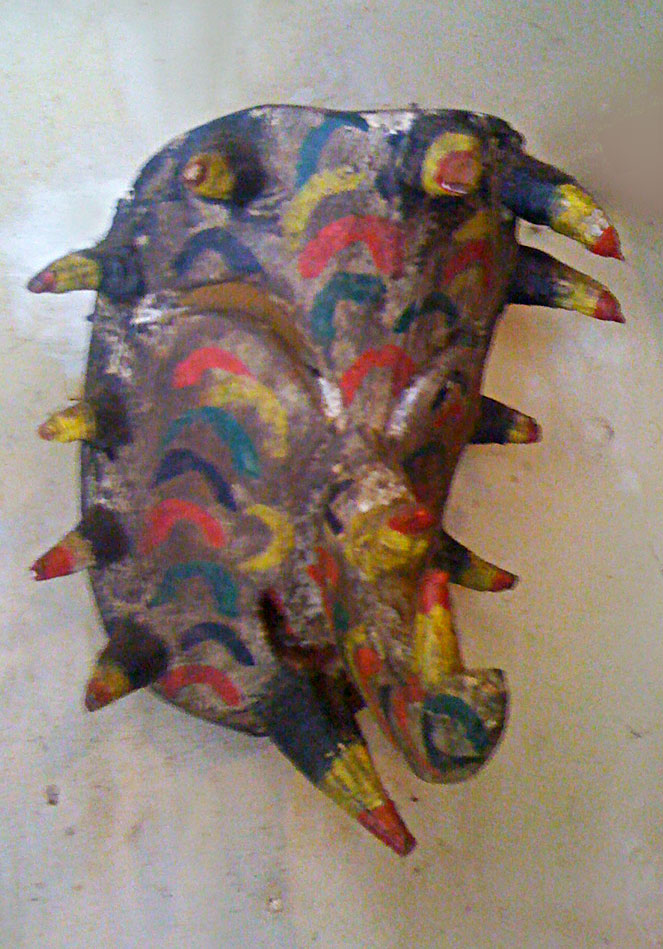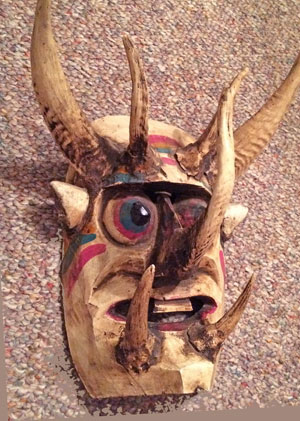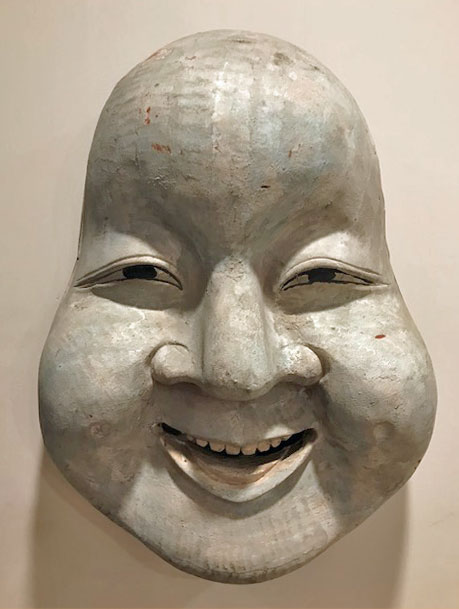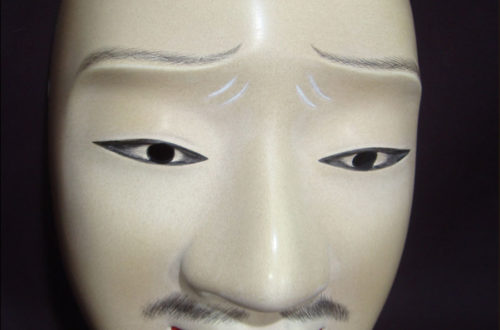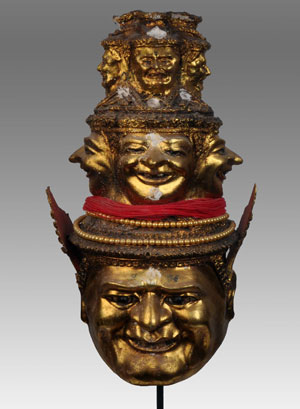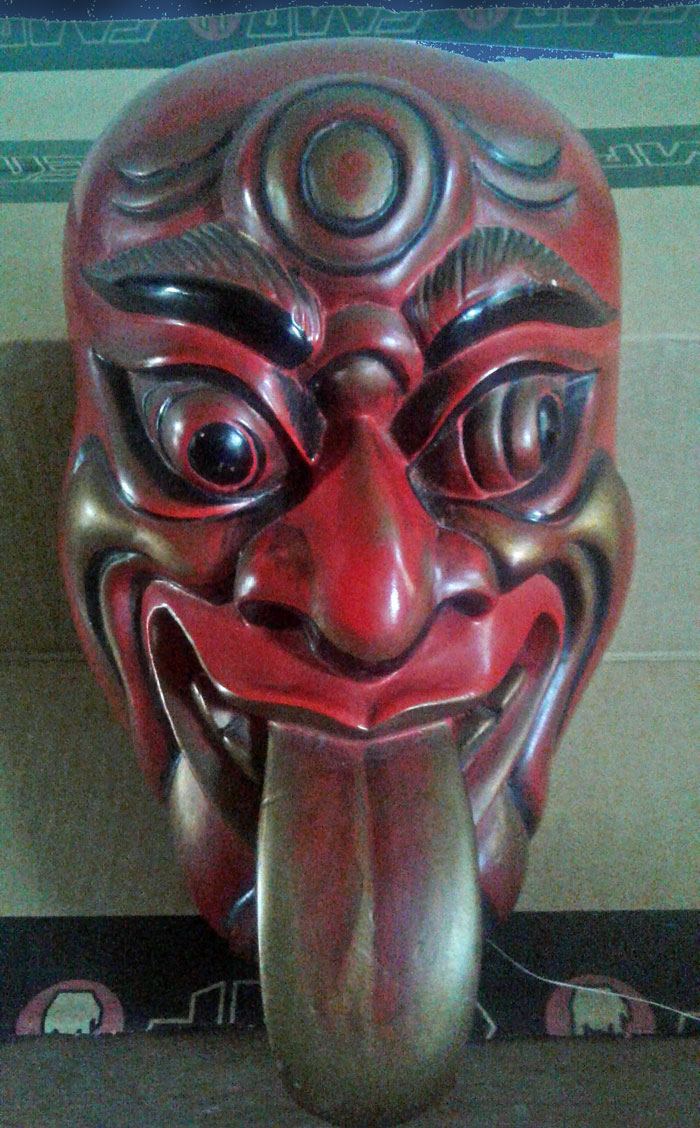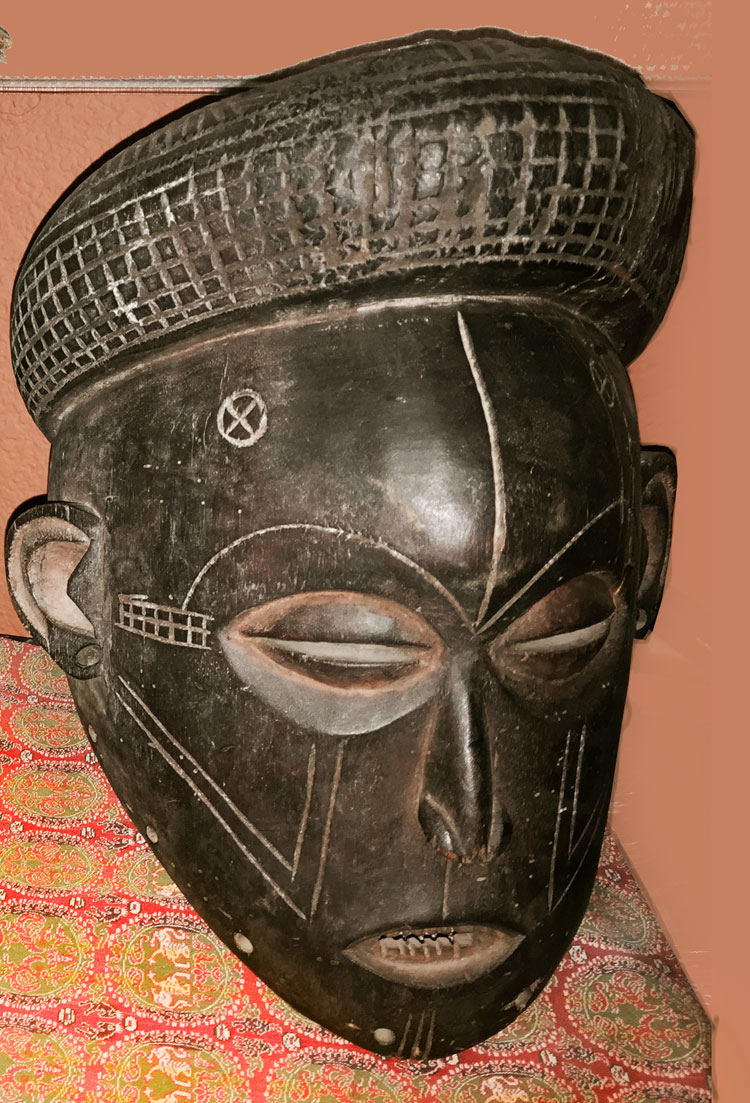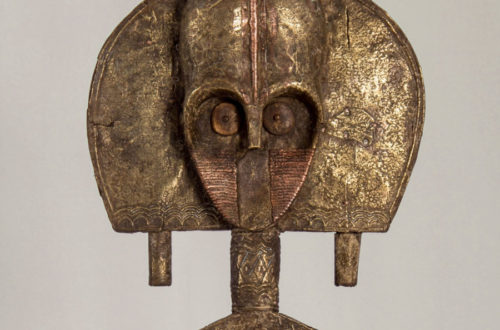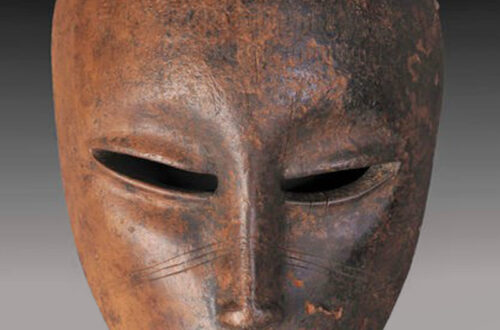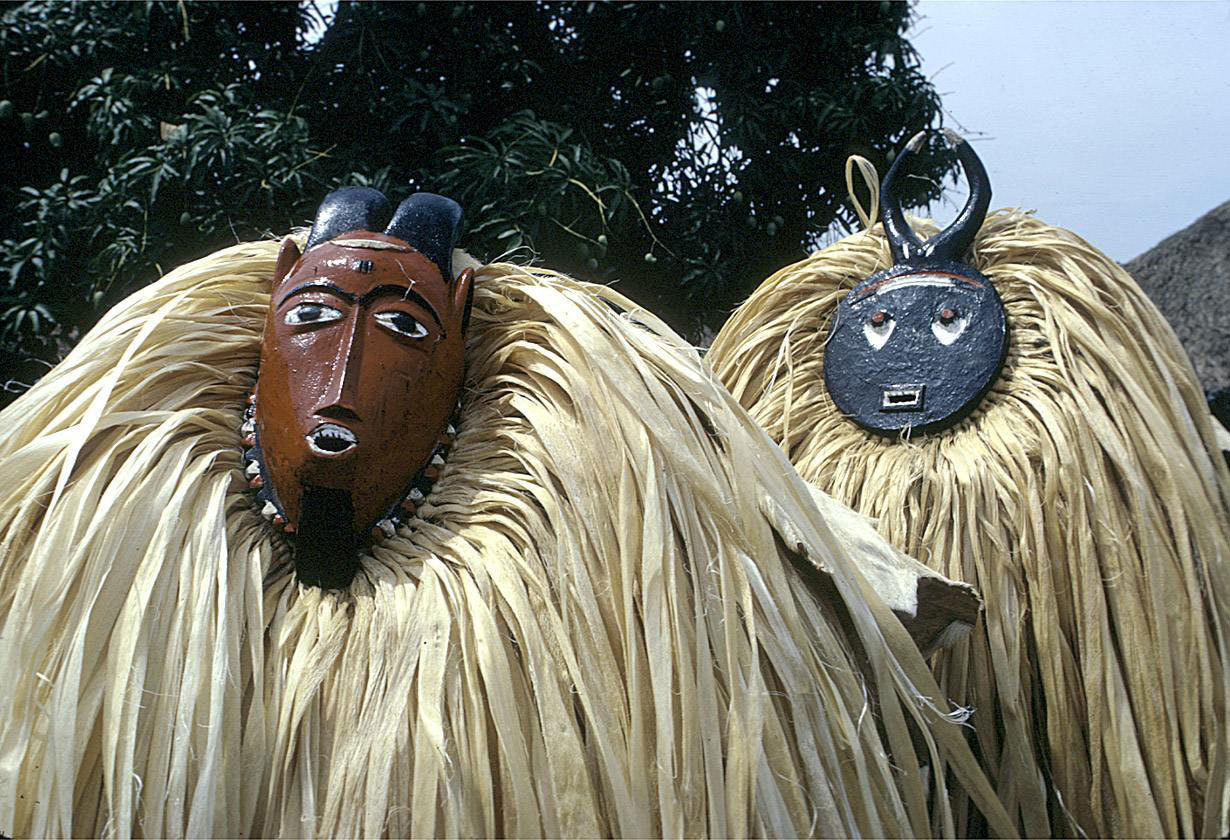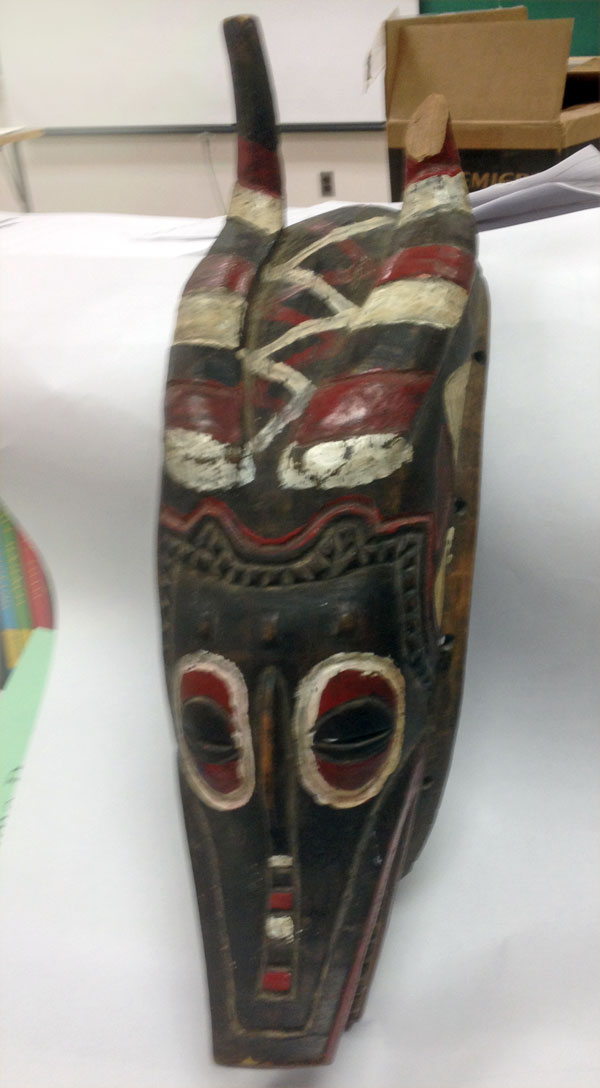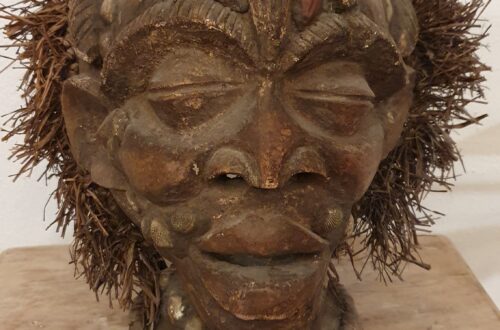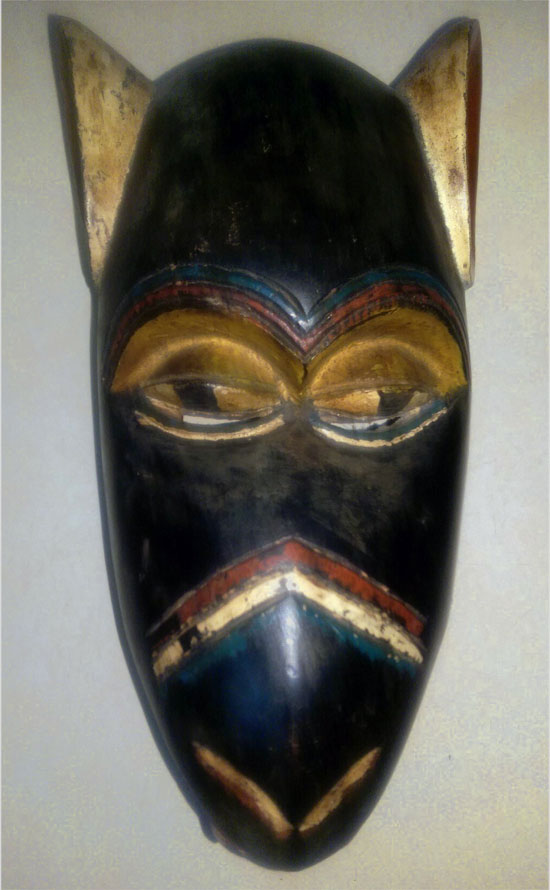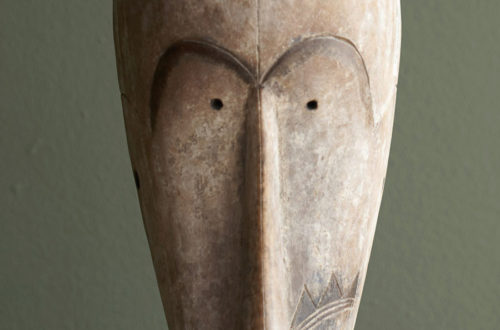Q: I need your help or advice: you posted time ago a mask in the Europe section, a mask you wondered if it was the Rubenzahl character…(see foto attached). I have recently acquired two devil masks which seem to be from the very same carver. However, I have no info at all on my masks, the seller did not know anything. I suspect them to be from Austria, so called Perchten masks. They might be old, but I am not so sure. So, I need to do research. Do you have any info on your posted mask as of carver, age, origin, link of the posted mask or owner? This…
-
-
Dan racer mask from W. Africa
Q: Please appraise this mask for me. I appreciate it. Richard, 1220 A: We do not do appraisals as part of our free “Ask the Mask Man” service. But the Dan you sent in is a modern copy (albeit, of poor quality) of one of the most collectible masks in the world. You can read about the two basic types on page 20 of our book, Masks of the World, or go to Google for much more info. I decided to show first an old, used racer mask that, despite its condition, still shows off the exquisite proportions of this very-collectable piece of folk art. It would sell for…
-
Flums Carnival Mask
Here is a fine European mask recently acquired by Aaron. The following is written by him. COUNTRY: Switzerland SUBREGION: Flums ETHNICITY: Swiss DESCRIPTION: Chrottni Mask MAKER: Margrit Stoop, Flums (1926-?) CEREMONY: Fasnacht (carnival) AGE: 1974 MAIN MATERIAL: wood OTHER MATERIALS: paint; dyed burlap Fasnacht is what the Swiss call Carnival. In many towns in Austria, southern Germany, Switzerland, and northern Italy, local folk don elaborate masks and costumes to parade through the town. Different towns have variations on the parade, such as the Schemenlaufen of Imst, the Schellerlaufen of Nassereith, and the Muller and Matschgerer of Innsbruck, Austria. In Flums, carnival masks have a distinctive pear shape and tend to have a satirical purpose. The Flums style has…
-
One-eyed, black-skinned Moor from Mexico
Q: I posted the last 2 masks from Veracruz, both Moors but in very different styles. Scans are attached f you’re interested in seeing them. Aaron, 1218 A: As always, thank you for sharing your recent mask acquisitions with us. It seems you are able to tract down wonderful finds in any part of the world. Couldn’t we do the same? Try this… Just Google the indigenous people who populate the area where you are going. Also, don’t be afraid to visit some museums or read books ahead of time. The more you know, the better your results will be. Obviously, Aaron does a lot of research. Here is what…
-
Another shaman’s mask from the Highlands
Q: Carved out of one piece, this mask was bought at a flea fair for £20. Steve, 1217 A: About two weeks ago I posted a shaman’s mask from Nepal. It has the same custom’s seal on its back that the previous one had. The Middle Highlands area of Nepal has several ethnic groups including the Rai, Gurung, Magar and Tharu. These people live in remote rural areas and are quite poor. Often their masks are crudely carved and have a dark patina.This mask is an example of that. Unfortunately, I can’t be sure of its authenticity. Save Save
-
Mexican or Guatemalan clay mask?
Q: I bought this mask 30 years ago while traveling in Mexico. It might be from around Oaxaca. I find the figure in the forehead to be very intriguing. Can you tell me anything about it. It’s either clay or a very hard plaster. Beverly, 1216 A: I have seen these painted ceramics before and assumed yours was from Guatemala because of the features. The first Guatemalan mask in my book, Masks of the World, on page 140, is similar to yours. But I’ve also seen Mexican masks made of terracotta. Several very experienced collectors I know consider them decoratives made strictly for the tourist trade. Clay is a terrible…
-
Clown mask from Veracruz
Q: I posted 3 more of the masks I acquired in Veracruz over the summer. I thought you might enjoy seeing them. I’ll be posting more, and more from Jalisco (and a few from Estado de Mexico) as well in the next couple of weeks. Aaron, 1215 A: Here is Aaron’s thorough description. TITLE: Payaso Mask GENERAL REGION: Latin America COUNTRY: Mexico SUBREGION: Veracruz ETHNICITY: Nahua DESCRIPTION: Payaso (Clown) Mask MAKER: Unknown CEREMONY: Santo Entierro de Cristo; Fiesta de la Asunción; Carnival AGE: 2013 MAIN MATERIAL: wood OTHER MATERIALS: oil-based paint Santo Entierro de Cristo (“Sacred Burial of Christ”) is an important festival in parts of Veracruz, particularly in the region of Teocelo, and is celebrated on…
-
Large Japanese wall-hanging
Q: This mask is 17″ tall. I think it’s cypress wood with a gofun finish. Thanks for any info. Gigi, 1214 A: One of my rules is that we post masks that could or have been used in culture, plus good quality reproductions of same. We try to avoid items made for other purposes. I broke the rule because this sculpture is so beautiful and so Japanese. It looks like a male version of Ofuku, but it does not depict a specific character from Kyogen or Noh. Gigi: don’t hesitate to share with our viewers the who, what, when, where and how much you paid for these pieces. Inquiring minds…
-
Lele mask from the Congo
Q: These are a couple of the mask I own. I know they are from the Congo, and collected from a time when it was Zaire. One on the right used to have grass as a headpiece but it could not make the customs. Ann, 1213 A: I picked the one that I thought would interest collectors the most. It is from the Lele people in the West Kasai region of the Democratic Republic of Congo. The more familiar Luluwa and Kuba tribes live nearby. I do not know the name or function of this particular mask. Hopefully one of our viewers might have more info to add.
-
Guro Zamble mask
Q: I found this mask in an antique store for about $30 USD. I’m mostly interested in knowing about it as an example of a mask that might have been used in a dance or performance. I mostly collect masks that have been used in theatrical performances from any part of the world, but my budget is very small. John, 1212 A: The Zamble is a common Guro mask that is distinctive in design and very popular in Ivory Coast, West Africa. It is a mythical male character that combines the features of a leopard and an antelope. It is usually performed with a Gu masks, which represents its wife.…
